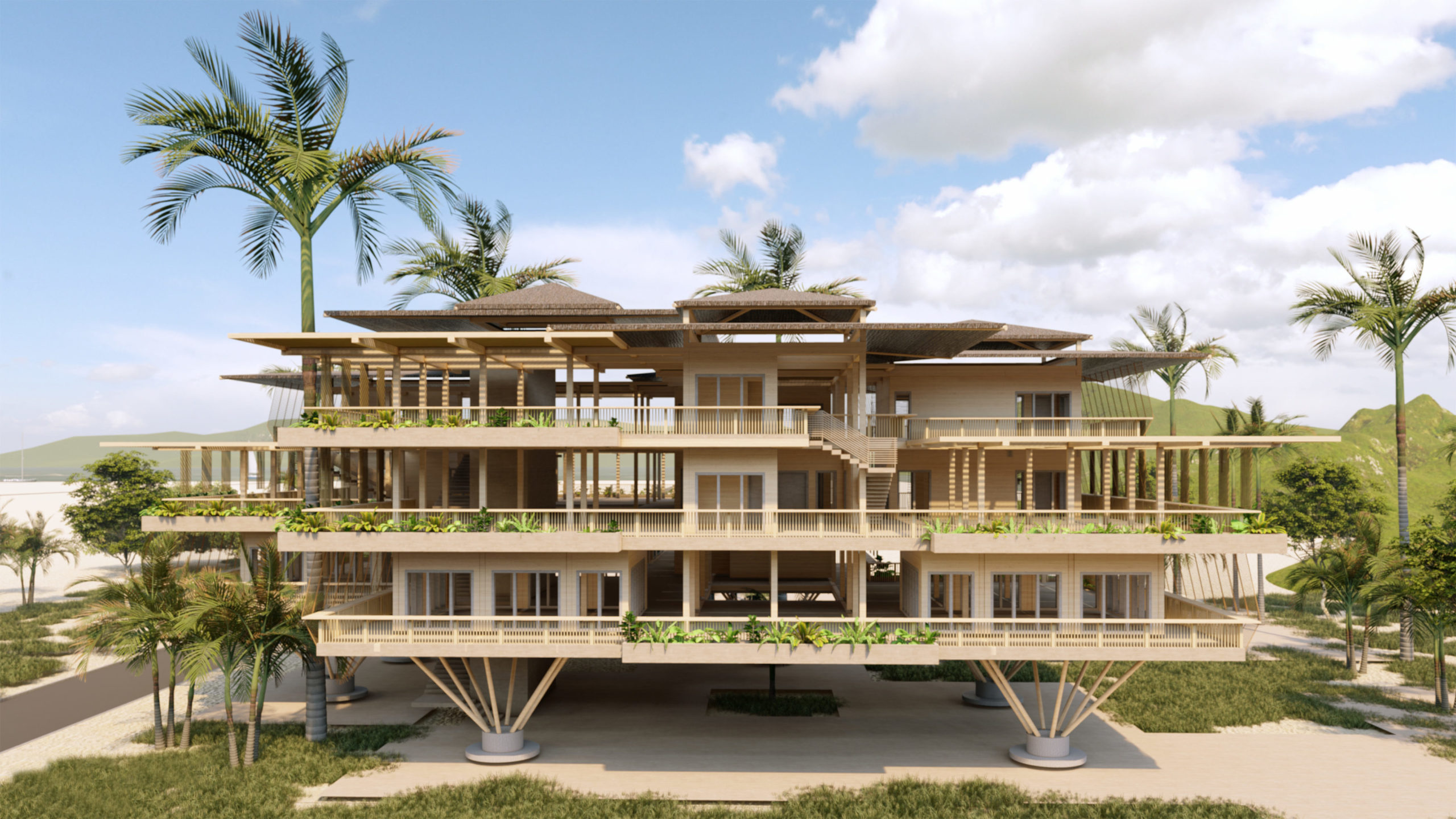
The design of the envelope plays a vital role in the design. The roof and the facade are part of the metabolic systems to aid with generating solar energy and collecting rainwater. The envelope is also efficiently designed keeping the thermodynamic analysis in mind.
FACADE DESIGN:
The facade is designed using a cane facade. The design uses cane as it is a local material and is easily available. Additionally, the facade is constructed using local skills and serves functionally to create the desired aesthetic. The cane is facade creates a barrier that keeps the heat out but allows for ample ventilation. The porosity of the envelope allows for the diffused light to enter the space and keep is well lit and also creates a Venturi Effect that cools down the hot air before it enters the spaces.
The facade is installed primarily on the East and the West facade to to keep the low angles of the sun during the mornings and the evenings from entering the space. The facade is installed on the North and South facades only along the residential units to allow for privacy. These also act as weather protection for the interior spaces.
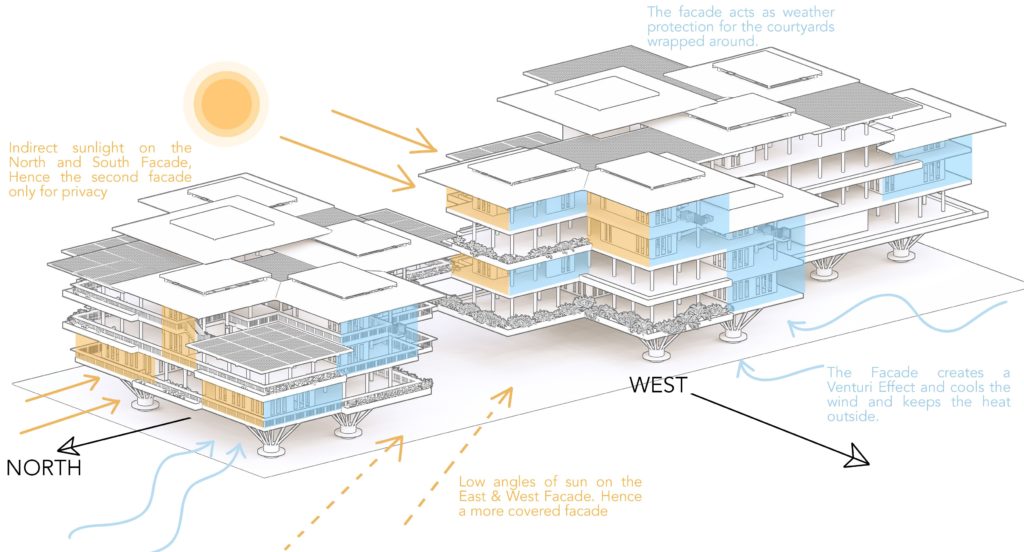
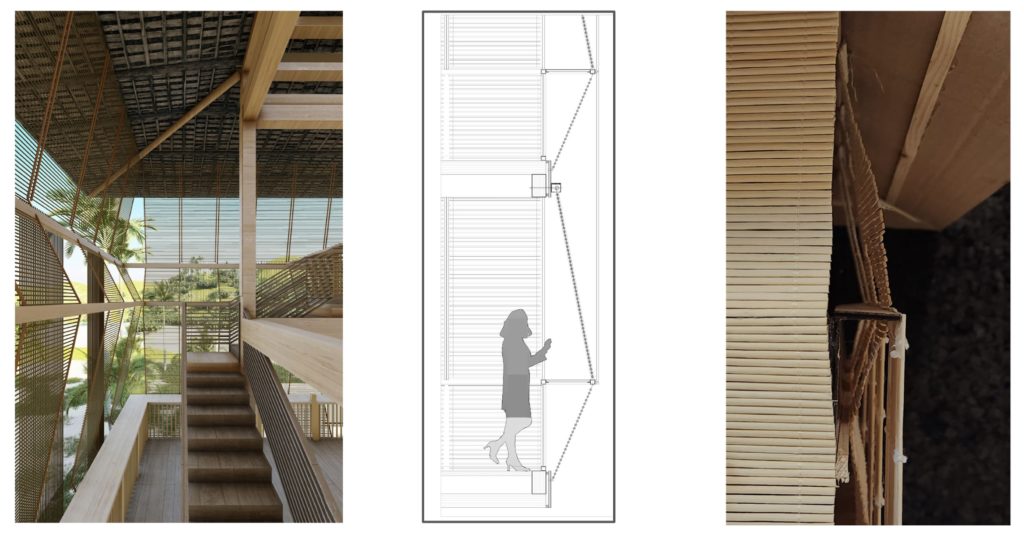
The facade is conceptually designed to represent the local weaving skills of the artisans that has cultural significance and represents the people of Ghana. the facade is made of two elements- the Vertical facade and the Horizontal facade. The Vertical facade is made of the cane tied in a vertical orientation and is fixed in place. The Horizontal facade has the cane running in a horizontal manner and creates the movement in the facade both visually in manner of installation and literally for when it can be rolled open as per need.
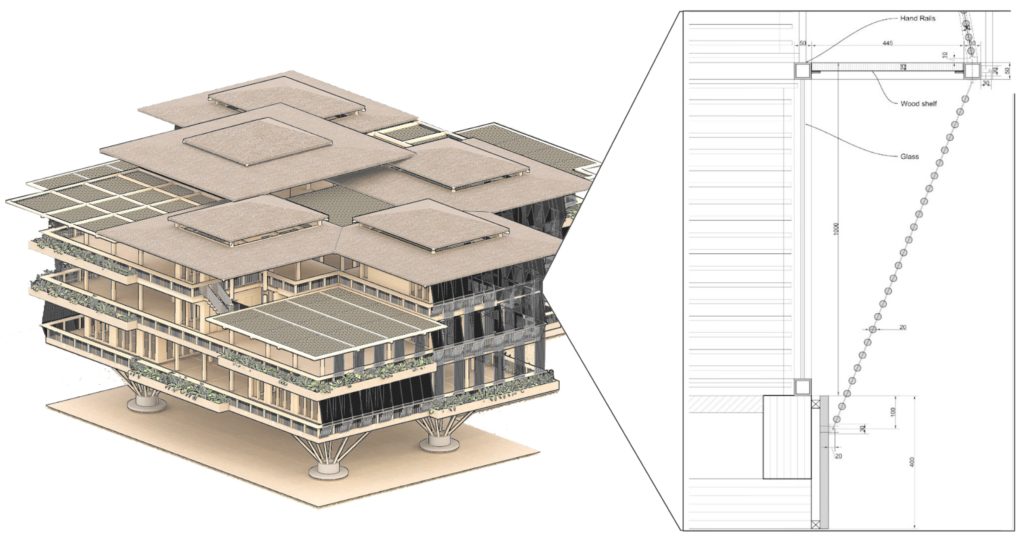
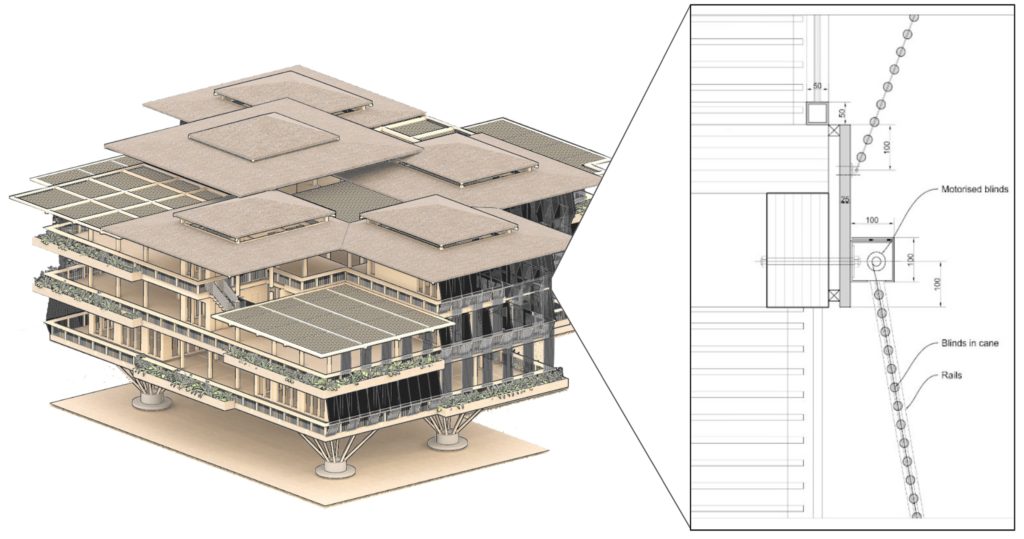
ROOF ENVELOPE:
The Roof plays a vital role in the collection of rain water and the generation of solar energy. There are two typologies of roofs. The Thatch Roof which is the primary roof and creates the protection barrier for the occupied spaces and the Cane Pergolas for the Semi open spaces. We also wanted to take a sustainable approach using materials that can be easily sourced hence the choice of materials. The roofs have a large overhang of 2M on all sides. This accounts for the heavy rainfall and the high angles of the sun observed through out the year. This ensures that the internal spaces are safe from the extreme climate. The cane Pergolas allow for the light to enter and proper ventilation of all spaces.
The Thatch roofs are designed using two roofs. This allows for proper ventilation and also allows for the creation of a Vertical Stack Effect that helps ventilate all the internal spaces keeping them cool and breezy. The cane pergolas use the same material as the facade to help tie the design together and create an intricate play of light in these spaces.
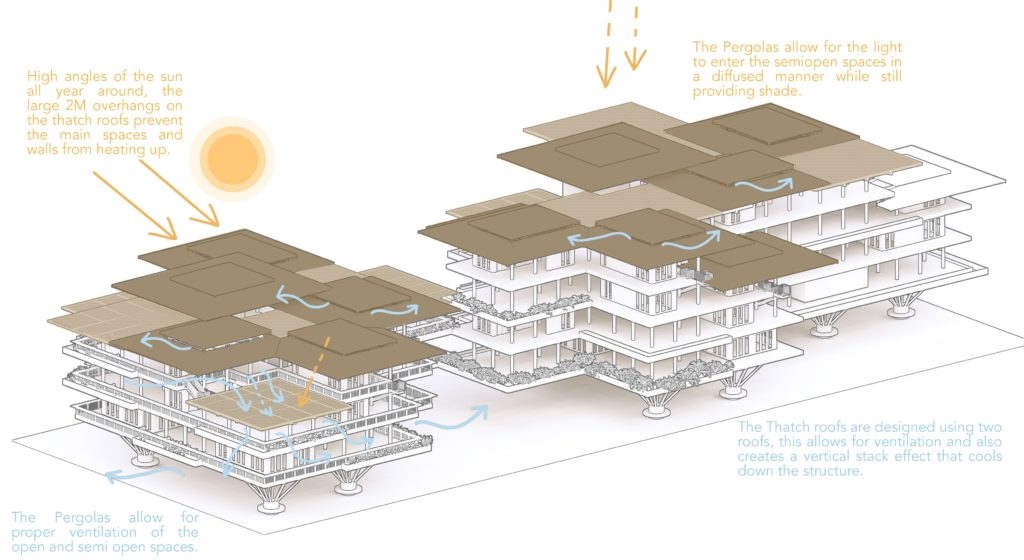
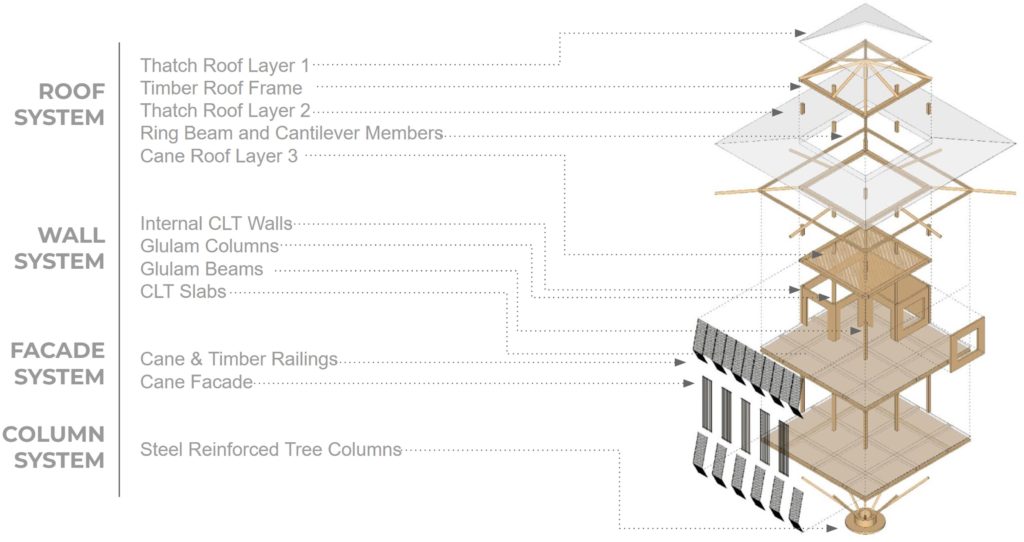

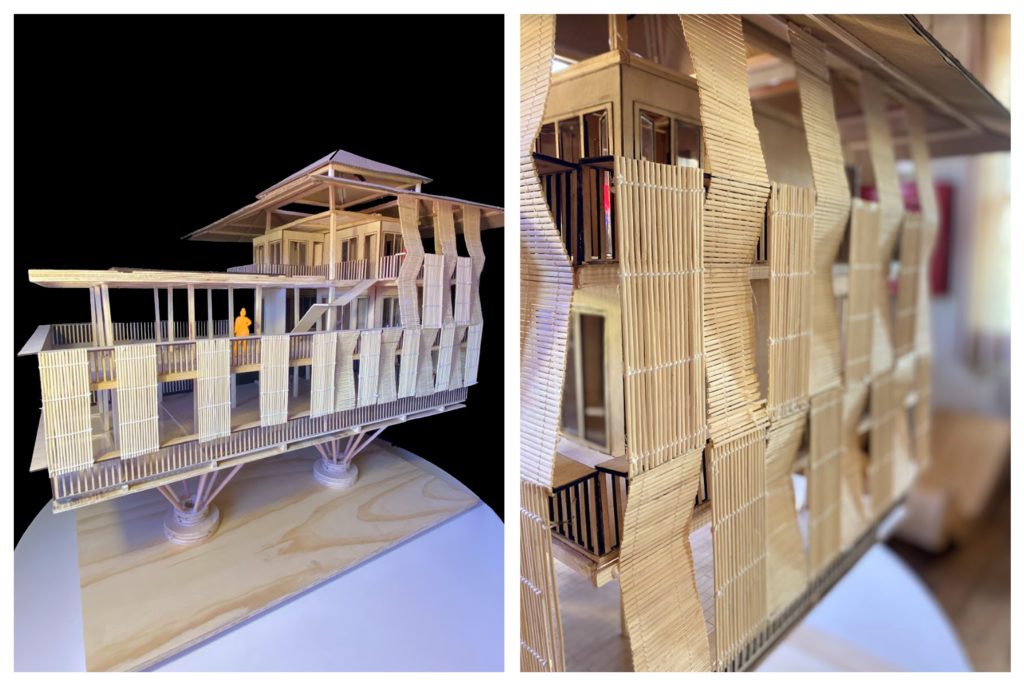

The Envelope not only protects the structure but also the community and the culture. The Design program caters to workshop spaces that educate and teach the community on how to create the cane facade and also the thatch roof among many other cultural heritage skills like fabric weaving and artisanal skills. It is this community and workshop that will look into the regular maintenance of the envelope and ensure the survival of both the structure and the rich cultural skills of the people of Ghana.
